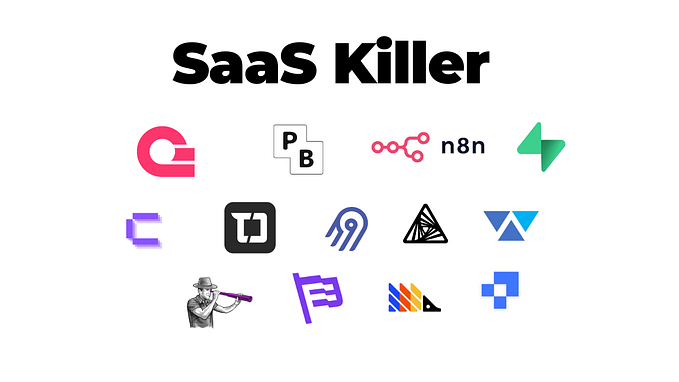How to Build Your Behavioral Design Portfolio

It’s daunting to sit across from a prospective employer as you try to explain the intricacies of your work experiences, the impact of effort you put toward results, and the value of what you can create. It’s an even more challenging task within the confines of a resume, where text must deliver the exact sentiment you would convey in an interview.
Often (particularly for roles where you might lead, not just execute significant projects), employers want to confirm that you are a sure bet, someone who will get the job done. If you’re a Behavioral Science practitioner, you might even face the added challenge of convincing your future employer that your perspective and background are the ideal matches for their challenges. There’s no better way to do this than take them on a journey through your work with a portfolio.
The portfolio is fundamental to job seeking in creative professions and disciplines, and it also offers a powerful supplement to non-visual careers. Delivering a concise, engaging, and impressive summary of your accomplishments and talents can set you apart in the application process and demonstrate to future employers that you’re serious about delivering value.
Let your work speak for itself: show it, don’t just talk about it.
CONTENTS
---------------------1. How to Construct Your Portfolio
- Information about You
- Your “greatest hits”2. How to pick your content3. Structure Your Portfolio4. Other Top Portfolio Tips

1. HOW TO CONSTRUCT YOUR PORTFOLIO
Information about you
Whose work is this? What motivated it? What’s the creator’s perspective, background, and personal influence on these projects?
It’s critical to provide context and clarity about yourself as a potential partner, employee, or contributor to developing an effective portfolio. Yes, the work is essential, but we need to know who created it! It’s worth spending some real-time on the page that describes you. Like the rest of the portfolio, it must stand on its own and give the reader a clear idea of your personality, background, and the unique value you’d bring to the table.
What should you include? Whatever you think is essential! Details like your name and credentials are key, but feel free to infuse it with more personality than a standard resume might have. Is there an anecdote about what drove you on the path you’re pursuing? Are specific figures, causes, or ideas central to your career inspiration? Consider this as part of your brand, too. What do you want your audience to think of when they think of you?

Your “greatest hits”
What are you most proud of accomplishing? Which projects will show your breadth and depth of skills and content knowledge? What would the audience want to see?
Your portfolio will need content! This checkpoint seems like a no-brainer, but choosing what to include can pose a real challenge. Depending on the role you’re pursuing, the length of your career, and the work you can include, you’ll have to consider different details to get the content right. One of the biggest mistakes people make with portfolios for non-visual work is accidentally replicating their resume — this isn’t a bad thing. Still, it doesn’t let the portfolio do as much heavy lifting. Consider using the portfolio to supplement and build on your resume and other standard job application documents.

2. HOW TO PICK YOUR CONTENT
Consider thinking through the following questions.
- What is most valuable to my audience? Put yourself in the shoes of the person you hope will review your portfolio. As an interviewer or hiring manager, what are their priorities? What are they evaluated on at work, and what are they hoping a new hire will help support? Asking yourself what will matter to the person reading your portfolio will help you speak directly to them, highlighting where your interests align, where you’ve already excelled, and how you can hit the ground running in a new role.
- What gaps might an evaluator see on your resume, and how could you fill them by showcasing transferable skills and expertise in your portfolio? Head off those concerns immediately by not only mentioning how you meet their needs but by demonstrating how you were able to deliver real-world value. If you don’t have a particular credential or certification, perhaps you performed a related function on a project. Maybe you haven’t worked directly with clients, but you expertly managed internal stakeholders. Applying the concept of transferable skills so often used in resume writing is just as valuable in a portfolio.
- What unique qualifications, capabilities, or experiences do I have that other applicants might not possess? Calling out projects that indicate an ability to think and work in a cross-functional or interdisciplinary manner is critical to showing your audience that you would be a value-add to the team. You’ll undoubtedly get bonus points if you highlight nice-to-have experiences that may not be required but will make you more effective. These experiences could include niche certifications, content or domain expertise, foreign languages, or even extracurricular work projects aimed at general company advancement, like supporting a diverse working group or developing junior employees.
3. STRUCTURE YOUR PORTFOLIO
Once you have your projects and content selected, it all comes down to the organization and presentation of the materials.
Keeping your portfolio organized, easy to follow, and balanced between conciseness and detail will make sure it packs a punch. You may, of course, customize however you see fit, but consider the following structure when setting up your portfolio (and stay tuned for an additional Habit Weekly resource to help streamline this process!).

Headline: Capture your reader’s attention with a quick phrase about your completed project or the problem you solved. Make it compelling, use punchy language, and be sure it sparks curiosity.
Background: Write up a brief but descriptive story about the project. Explain the context, the job you had to do, any consequences on the line, and any additional details that help “set the scene” and explain to the reader why this work mattered. Keep this to no more than six sentences; making it too long runs the risk of losing attention.
Roles & Actions: Describe the specific and tangible actions you took to bring this project over the finish line. Focus on your impacts, bring in information about your unique value-add to the situation, and help your reader also understand your role in the context of the team or initiative.
Outcomes & Impacts: Detail the positive results from your direct involvement, big or small. Highlight how they opened doors for other colleagues or projects, and be sure to convey the value of those results as it pertains to the team’s priorities (e.g., KPIs, sales targets, user metrics). Quantifying this section is critical.
Reviews & Feedback: This is not essential, but if you have quotes, feedback, or positive reviews to share from stakeholders, feel free to include them if it would be appropriate. Anonymize the contributor, avoid editorializing commentary, and don’t worry if you don’t have any for a specific project.
4. OTHER TOP PORTFOLIO TIPS
1. Keep it simple!
A reviewer may be evaluating dozens and dozens of resumes and application packages in a single afternoon. Making sure your portfolio is easy to navigate, cleanly formatted, and structured logically can go a long way to ensuring someone takes the time to review it. It is also worth remembering that the content is the most important detail for this portfolio — not the fancy graphics!
2. Keep it engaging!
Tell your story with this document. Use your portfolio to convey your personality and energy. Be descriptive and creative with language, and imagine you are talking to the person directly. How might you create enthusiasm and curiosity when telling the story of your work?
3. Keep it accessible!
Balancing professional terminology and communication styles with accessibility is critical. Overloading your portfolio with detailed charts, obscure abbreviations, buzzwordy phrases, or other industry- or company-specific communication quirks could backfire and alienate whoever reads your portfolio. Consider having a friend outside your industry read it over and who will let you know where you can streamline and write more clearly before submitting it. Remember: it’s crucial to sound knowledgeable but not at the expense of losing your audience.
4. Keep it current!
Maintaining the portfolio and committing to regular updates, refinements, and reviews is arguably the most crucial aspect to remember. Use the behavioral science of commitment devices and time-boxing to ensure this gets done. Set aside time each month or each quarter to sit down, review your projects, and ensure that your portfolio reflects them in the best way possible. Reward yourself with time to reflect on accomplishments and obstacles overcome; you’ve earned it.

A well-produced portfolio can be a game-changer on the job market. It can also help build the case for a promotion, support a change in profession or industry, and remind you of all that you’ve accomplished in your career. By delivering a clear, concise, compelling overview of your “greatest hits,” you’re making it easy for someone to say yes to your application or a raise.
This overview can be a time-intensive exercise, but it is worthwhile. Take your time composing the materials, refining them, and ensuring your portfolio speaks for itself (and for you!). Stay tuned for additional resources to support you in this process!
In the meantime, as you prepare and begin the work, remember to show, don’t tell.
Madison is a transformation and business strategist in the financial industry, passionate about interdisciplinary research, human-centered design, need-finding, and asking why.









